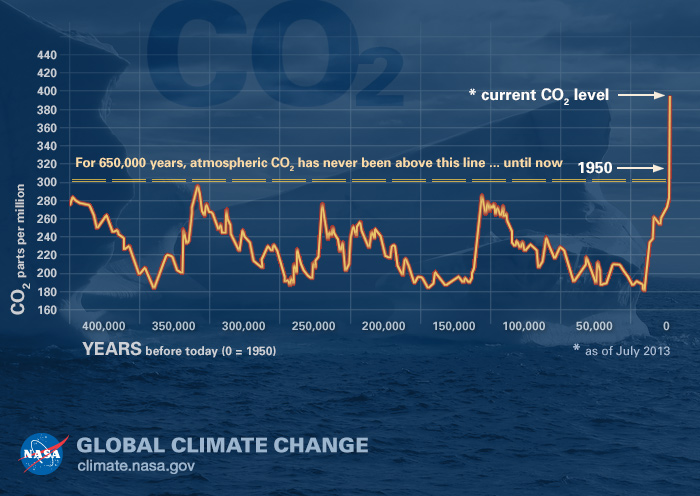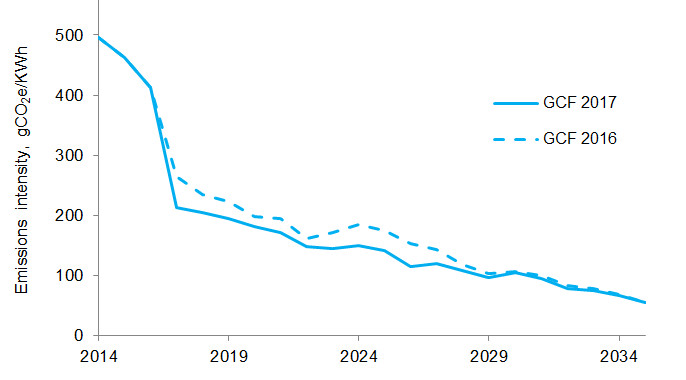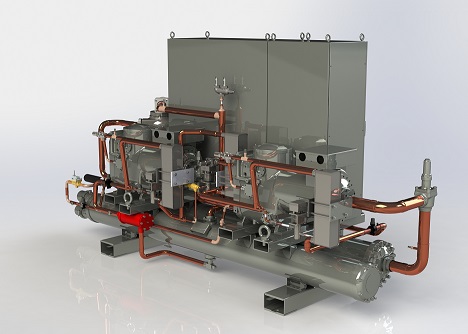Electrify Heat
Electrification of Heat is Easy
by Edward Thompson
It has been said that electrification of heat is difficult. This is what people say of a problem when they can't see the answer to it. An alternative form of excuse is to say "there is no silver bullet to solve carbon emissions from heating".
Let's look at the problem first, and then find the answer.

The problem is that, with a growing world population and increasing industrialisation, we are emitting carbon dioxide into the atmosphere at an epic rate. For the last 20 thousand years up to the development of the steam engine in the eighteenth century the level of CO2 in the atmosphere only fluctuated between 260 and 290 parts per million (ppm). In the twentieth century it rose to 390 ppm. By May 2018 it had risen to 411 ppm, the highest level for over 800 thousand years. The effects are seen in the dramatic retreat of polar ice caps and unpredictable weather patterns that risk de-stabilising life on Planet Earth.
The problem is caused by combustion. Combustion of coal, oil and gas to generate electricity, to power our transport and to heat our buildings has accelerated at an alarming rate over the last 200 years. Combustion is burning out of control and far exceeds the rate at which these reserves were laid down over the 60 million years of the carboniferous era.
The answer to controlling carbon emissions is to reduce our rate of burning fossil fuels. It would be genuinely difficult to fly an aeroplane to New York without burning fuel. But transport is only part of the problem. Half the energy we use in this country is spent on heating and cooling our homes and buildings. It is not difficult to heat our buildings without burning gas: we can use heat transfer instead.
The most efficient way to use heat transfer is to employ heat pumps. Heat pumps use a small amount of electricity to transfer, and concentrate, a large amount of heat from the environment into buildings. They release no CO2 on-site, and none at all if green electricity is used to run them. If they draw electricity from the National Grid, then the grid will emit some CO2 to the extent that the electricity was partly generated using combustion.
Decarbonisation of the Grid

The decarbonisation of the grid is progressing rapidly as coal is being phased out at the power stations and wind and other renewables are ramping up. Even SAP 10 now recognises this with a current figure of 233 grams of CO2/kWh of electricity generated, compared to 519 grams of CO2/kWh in the previous version, SAP 2012. Curiously, SAP 10 states that the current figure should not be used yet as it is still to enter a period of consultation. There could be an argument for waiting for a consultation where there are matters of opinion to be debated, but where the facts are crystal clear there is nothing to debate and the current figure should surely now be used.
The Mayor of London agrees. In the Energy Assessment Guidance published in October in relation strategic planning applications, the Greater London Authority not only encourages the use of the updated carbon emission factor of 233 gCO2/kWh, but also asks anyone using the historic carbon factor to provide a justification for doing so. It seems likely that many of the UK's Local Planning Authorities may now follow the lead of the GLA. This will encourage the uptake of heat pumps to heat our homes and buildings and the uptake in new fifth generation district heating networks.
95% of new heating systems in Norway use heat pumps

If the answer is so clear that decarbonisation of heating can be achieved with the electrification of heating using heat pumps, then why has the UK been so slow to adopt them? In Norway, 95% of new heating systems are based on heat pumps. In the UK that applies to less than 1%. In 2016 both France and Italy installed ten times as many heat pumps as were installed in the UK. Even Sweden installed five times as many. The key factors inhibiting the uptake of heat pumps in the UK include the higher availability of piped gas than in many other European countries, the conservatism in the construction industry, the low price of gas in the UK compared to Germany or the Nordic countries and the fact that the UK does not have an effective policy framework to promote heat pumps.
It seems that the UK is happy to sign the UN Paris Agreement to aim to reduce carbon emissions, but is not happy to take effective measures to limit carbon emissions from heating. The government seems happy to hide behind the excuse "that there is no silver bullet to solve carbon emissions from heating". The reality is that no amount of silver bullets will help to address the problem of carbon emissions. All you need is love, and a few heat pumps.
Air quality is also important
A significant benefit of using heat pumps over gas boilers is that there is no combustion involved. Combustion of gas emits oxides of nitrogen, a key factor in poor urban air quality. 22% of the NO2 in the air in London is attributable to gas boilers used for heating. It is estimated that up to 9,500 people a year suffer premature deaths because of poor air quality in London alone.
Alternative forms of low carbon heating
Alternative forms of low carbon heating have also been considered including direct electric heating, which has a significantly higher running cost; and the burning of hydrogen which emits no CO2 at the point of combustion.
However, upgrading the gas grid to contain tiny hydrogen molecules would incur a huge national cost. Upgrading all the boilers in the UK to burn hydrogen would also be a significant task. Production of hydrogen by steam methane reformation emits large volumes of CO2 which would require the development of economic Carbon Capture and Storage to achieve carbon neutrality.
A significant issue in burning hydrogen for heating is that burning hydrogen in air emits six times as much NOx as burning natural gas in air.
Hydrogen could also be derived from electrolysis powered by renewable electricity, although the overall efficiency would be less than 70%, before accounting for distribution losses. This compares to an efficiency of well over 350% for a typical ground source heat pump.
It is clear that the only practical route to heating without CO2 emissions is to avoid combustion. The alternative is to use heat transfer: which means using heat pumps. There is no need to search for esoteric alternatives when tried-and-tested heat pumps are available now.

